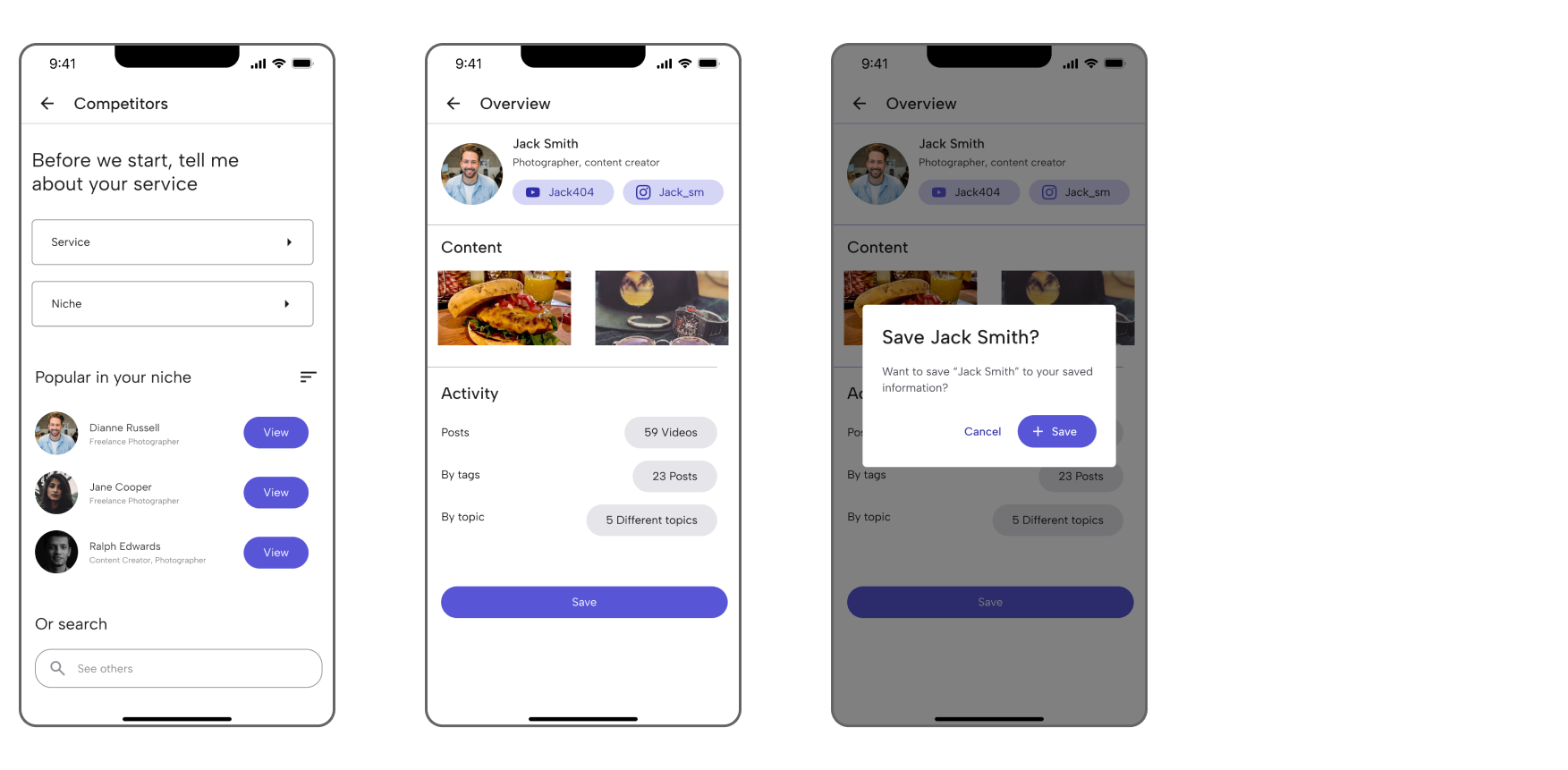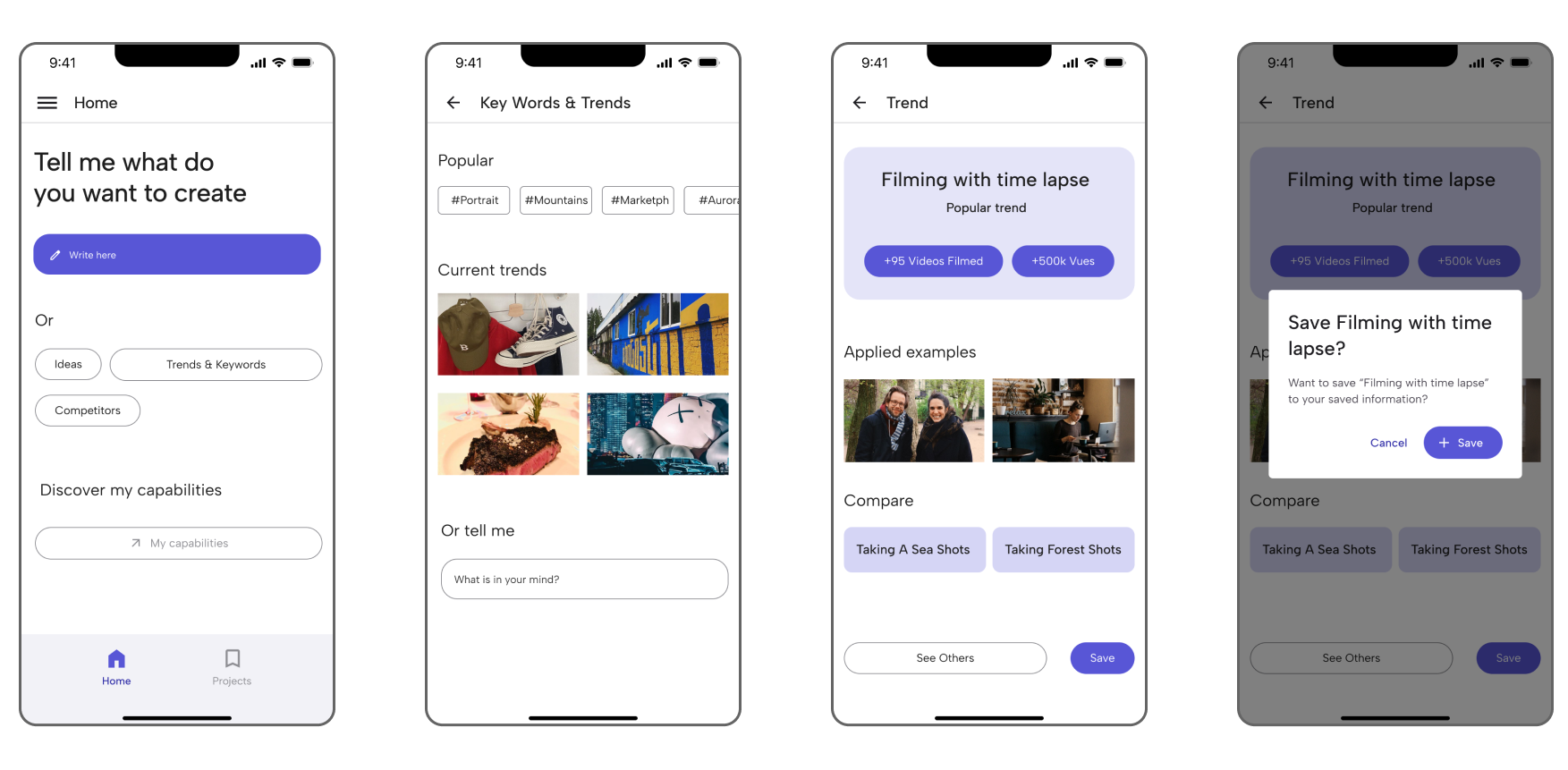Kick Off: Research
To gain a deep understanding of the market and target audience, I began with comprehensive market research encompassing key drivers, segmentation, demographics, and emerging trends. The research revealed that social media and smartphone penetration were the primary market drivers, with millennials and males constituting the majority of active content creators. Interestingly, self-expression and financial gain emerged as the top motivations for these creators.
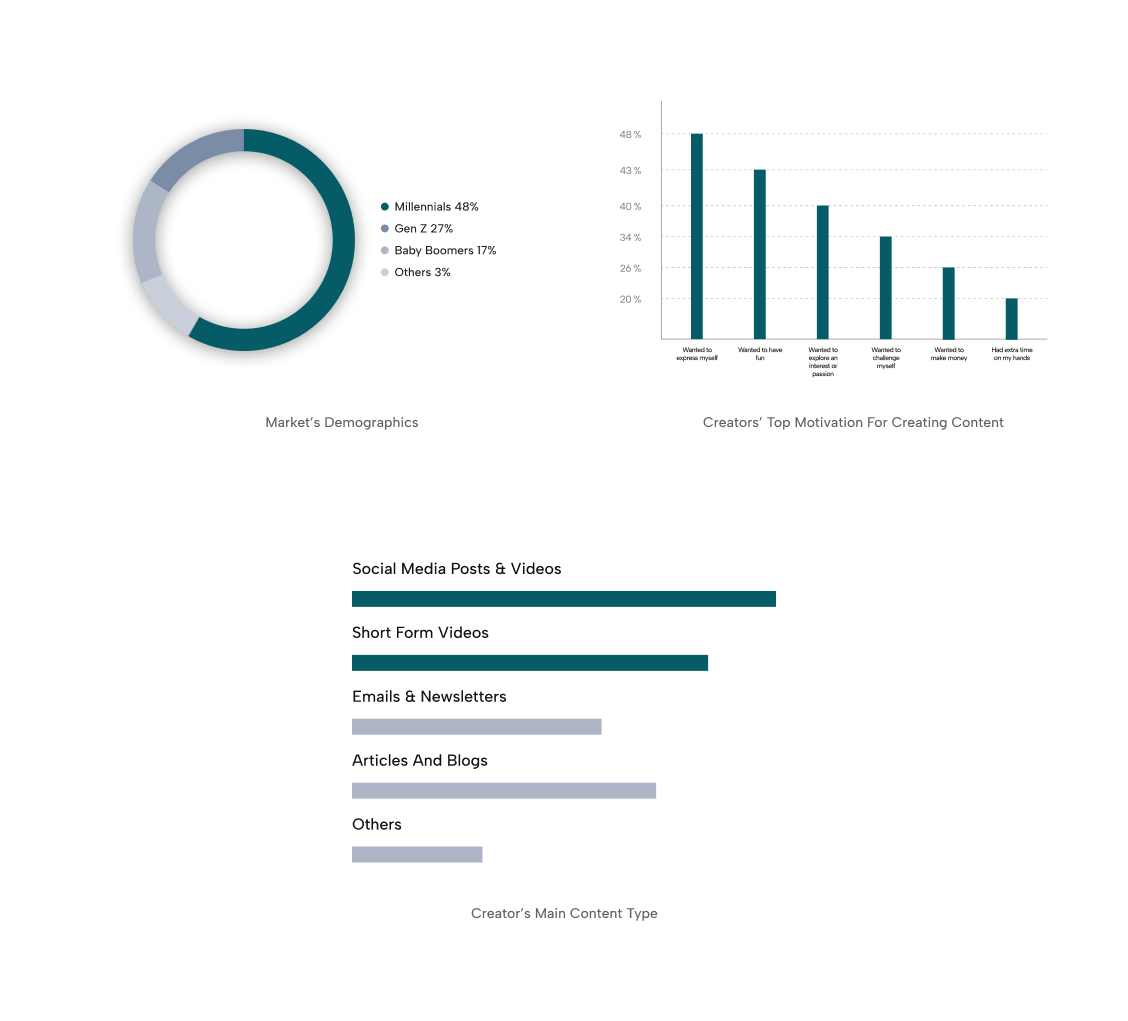
Diving deeper
To gain deeper empathy with my target audience, I conducted a qualitative survey targeted at relevant social media groups where content creators are active. Social media survey unveiled creators' shared process: defined goals, clear stages, ongoing challenges.
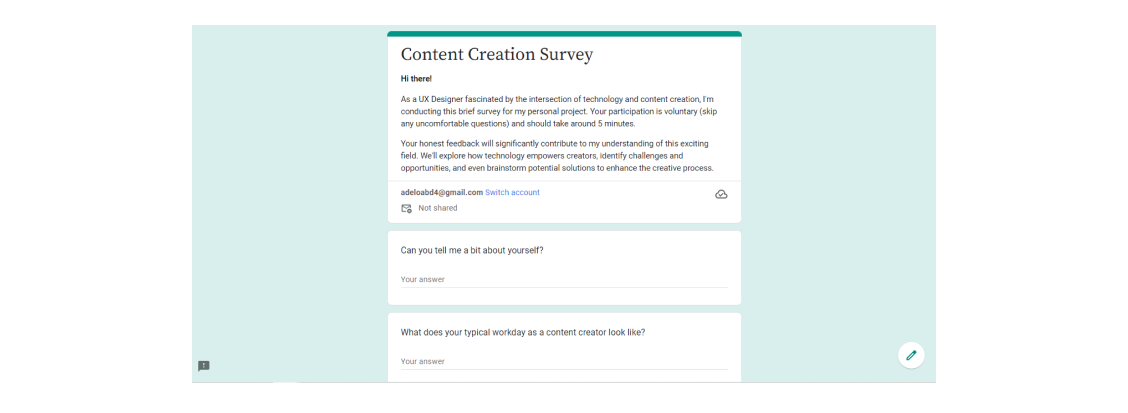
Observing in action
Building on the insights from the survey, I craved a deeper understanding of creators' minds at work. So, I directly observed content creators utilizing social media and their content. observation unveiled creators' reliance on organization, schedules, and tools. Yet, burnout and discouragement were recurring themes.
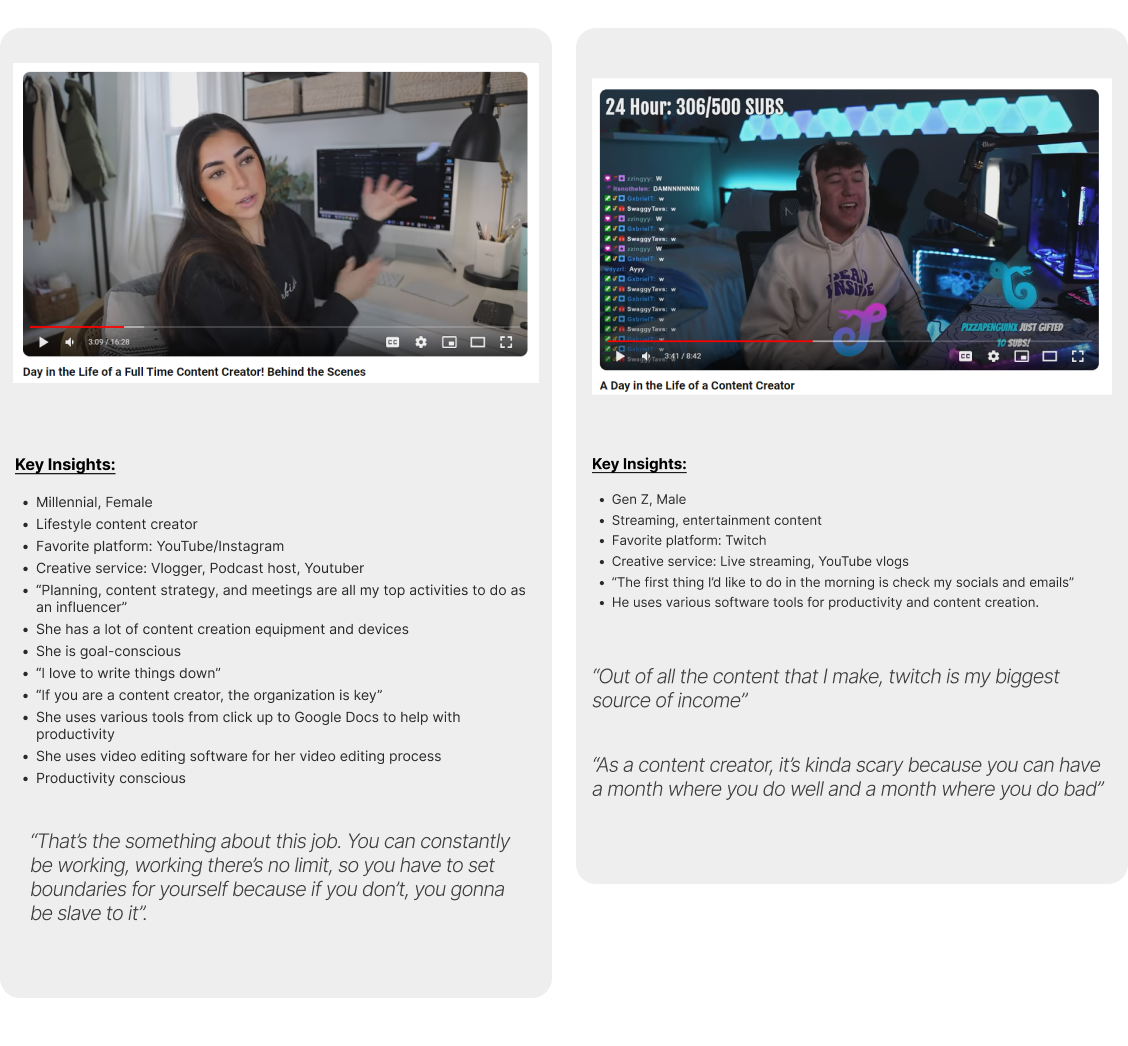
Making sense
To synthesize my research and spark empathy for potential blind spots, I developed a user persona named Nicholas. Nicholas embodies the diverse challenges creators face, both mental and logistical, throughout their creative process.

Capturing the Journey
Leveraging Nicholas, I crafted a user journey map to meticulously dissect his content creation process, including his thoughts, mindset, and every crucial step. User journey mapping with "Nicholas" exposed hidden opportunities and pain points, leading to a crystallized user need statement.
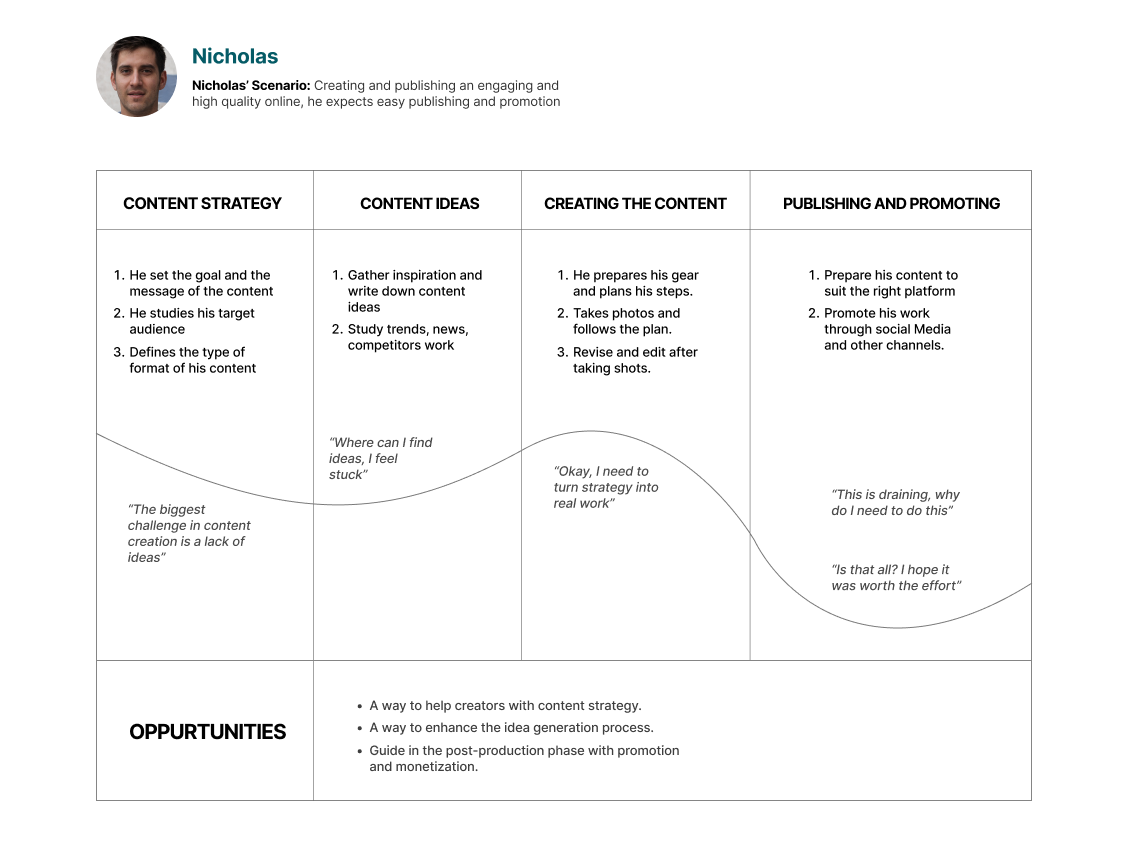
“Nicholas is an ambitious, quality-conscious photographer. Who needs a way to help generate ideas while aiming at high-quality content. To give a sense of genuine self-expression and brand recognition.”
Assessing the competition
To assess how established players address the identified user need, I conducted a comprehensive competitor analysis. That exposed a gap: no solution tackles early-stage content creation. Insights fueled core product values and design direction.

Product’s Strengths
Distilled my design concepts into a compelling value proposition, highlighting unique selling points that differentiate my product from the competition.

Design Strategy: Building the product
Conceptualizing rapidly
To explore various solutions, I embarked on a rapid ideation session, generating numerous product sketches. From there, I carefully selected key elements and constructed a paper prototype to demonstrate the core concept.
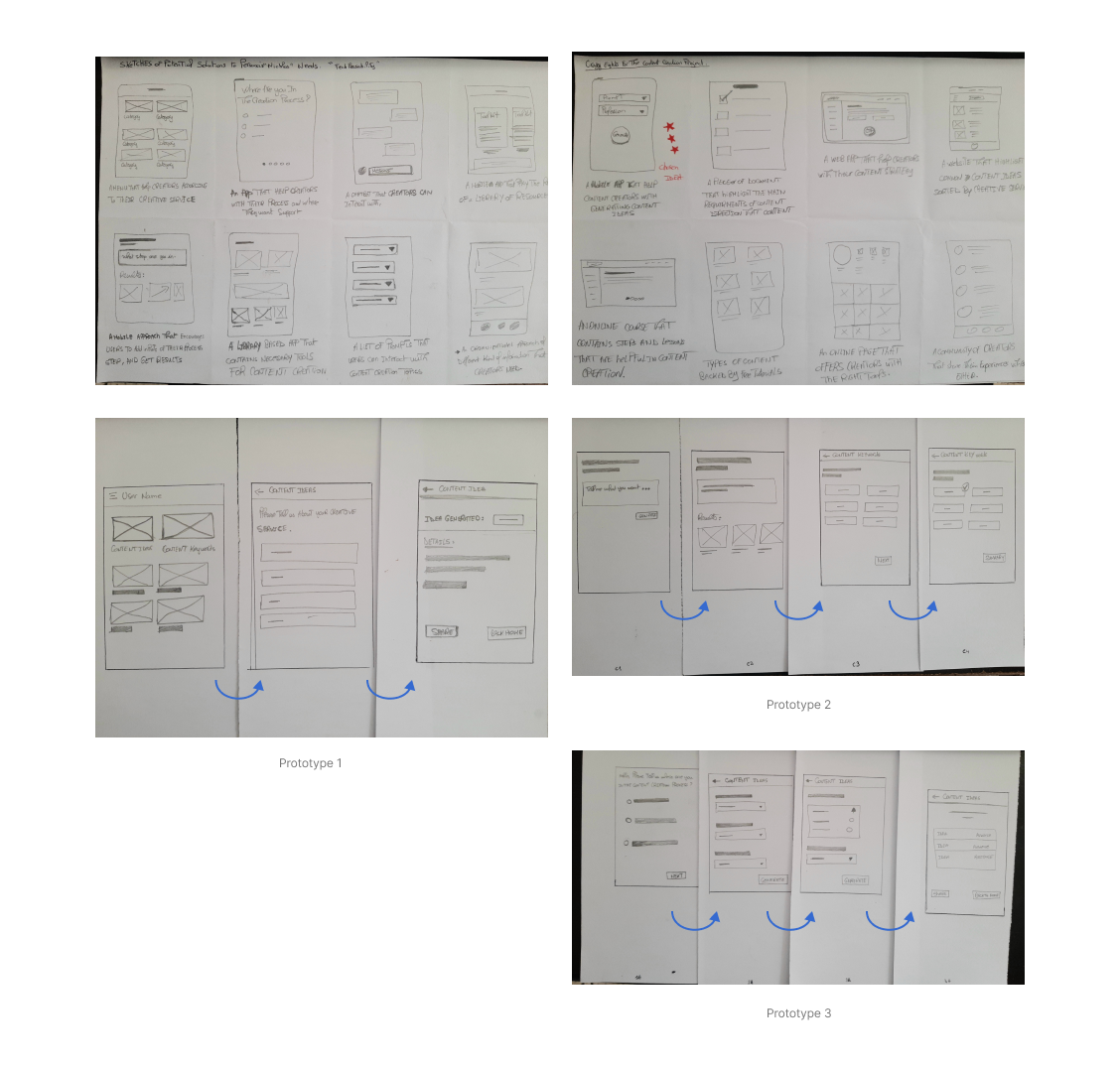
Building the MVP
I followed an Agile design process, prioritizing user needs and product objectives from the outset. This prioritized user needs and objectives. Early feedback via an MVP informed iterative development. Agile-Waterfall hybrid ensured efficiency within sprints.
I prioritized user needs and product objectives from the outset. As a first step, I created and organized the functional requirements, establishing a clear roadmap for the product's development. To enhance user experience and simplify information architecture, I meticulously structured and organized the product's requirements. This ensured that functions and information were intuitive and easy to complete, contributing to a smoother user journey.

With a clear understanding of content placement and user tasks, I created wireframes to visualize the overall layout and test how different elements would interact. This helped me identify and address potential usability issues before moving forward with development.

Testing early concepts
Testing Early Concepts
I conducted a usability study. I wanted to test my MVP and investigate common problems in my interfaces, and test if the product’s features solved users' problems. I created a research plan, prepared my script, and invited participants to conduct the research.
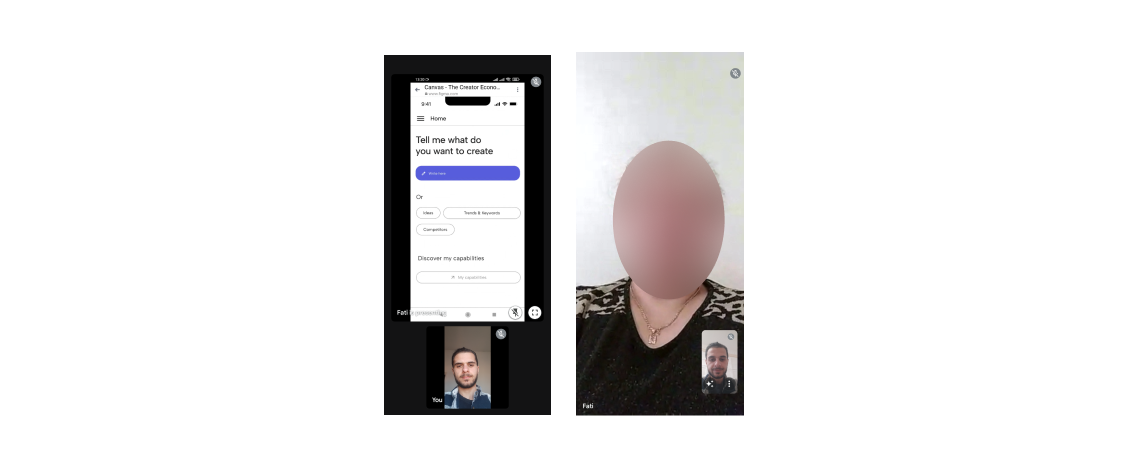
Findings from the feedback
Observing users' actions and taking notes of common behaviors and thoughts. Insights generated that common flow of organizing information into projects, and using AI features when generating ideas needed usability and features to facilitate task completion. I refined my mockups using the feedback collected.


